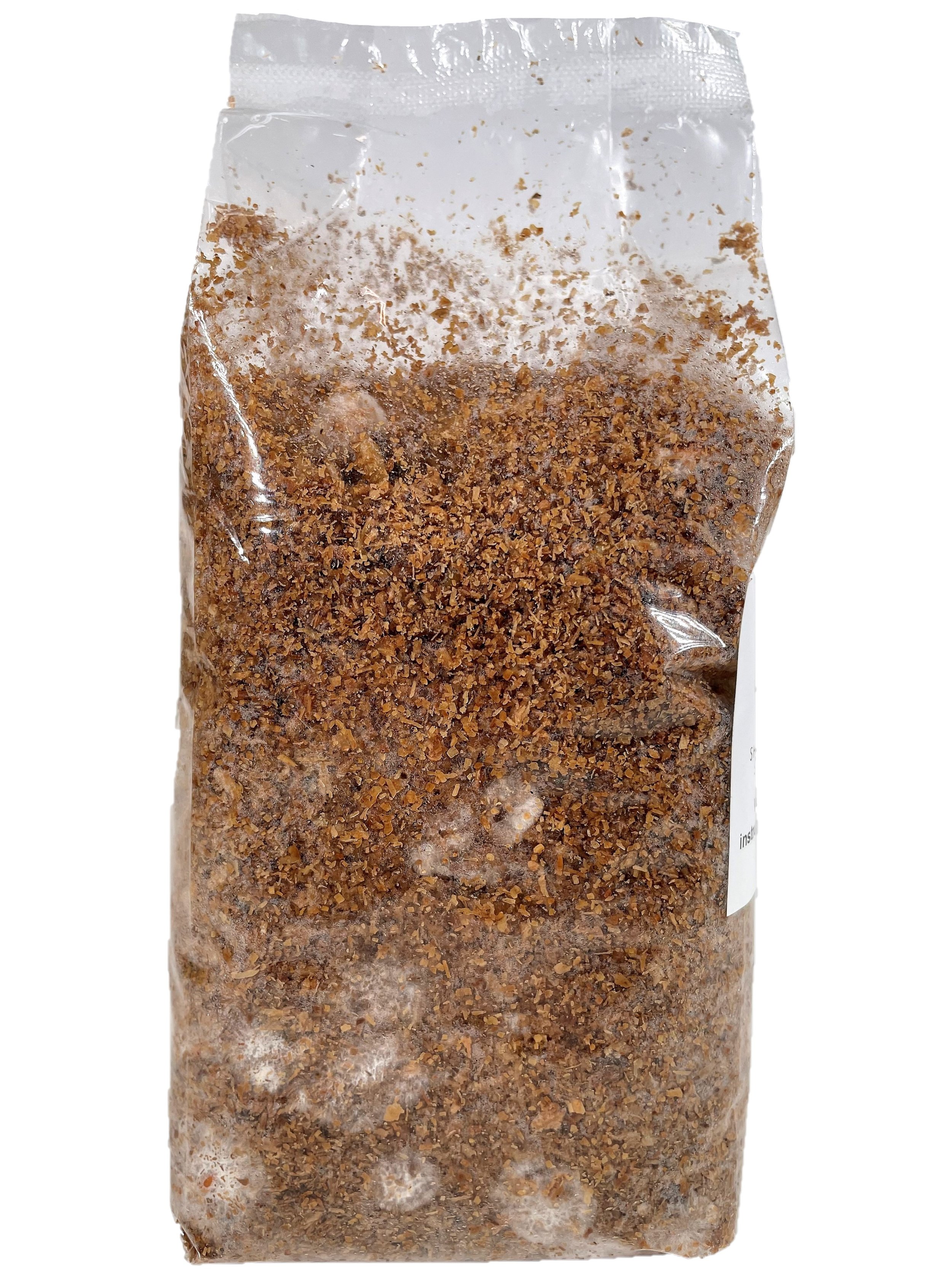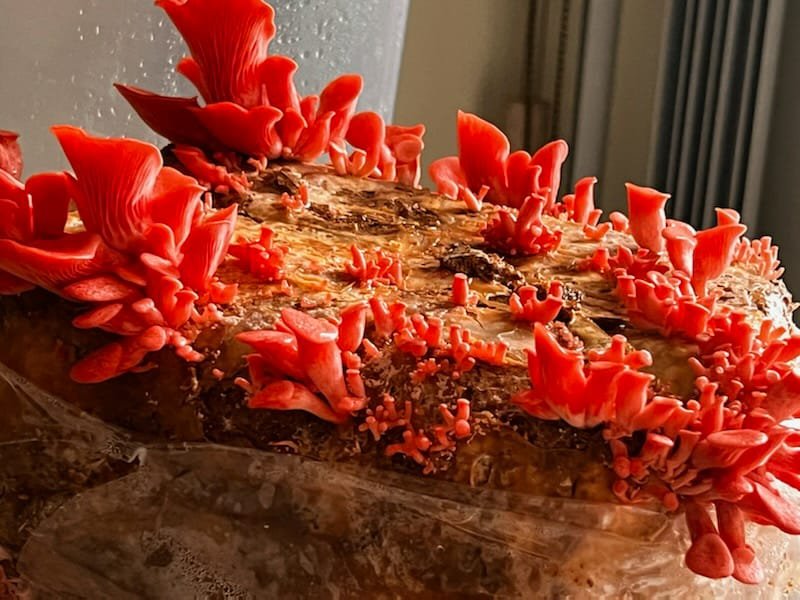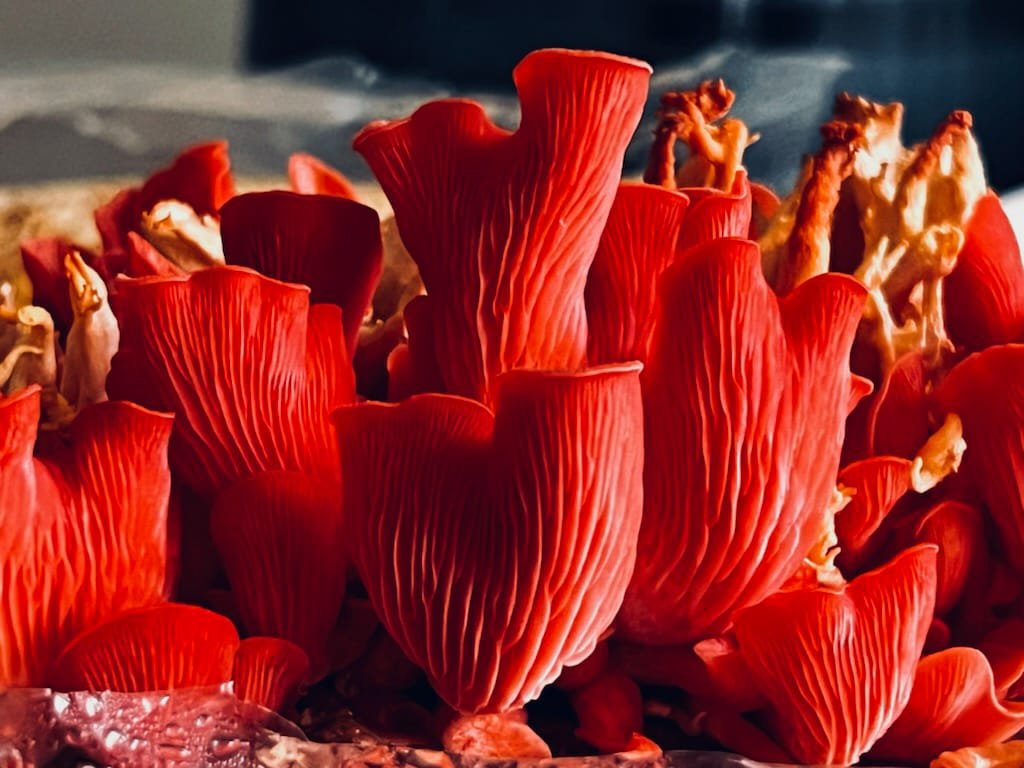How to Harvest the Perfect Pink Oyster Mushrooms for Flavour and Texture
Introduction
Mushrooms are a unique and interesting food item that can add texture, flavor, and nutrition to any dish. Pink Oyster mushrooms in particular have become increasingly popular over the past few years due to their vibrant coloration and delicious taste. But when is the right time for harvesting these tasty fungi? In this blog post we will look at what factors should be taken into consideration before you harvest your pink oyster mushroom crop so you know exactly when it’s ready!
The Life Cycle of Pink Oyster Mushrooms
Before discussing how best to determine when pink oysters are ripe for picking, let's take a closer look at their life cycle. Like all mushrooms, they go through four stages:
Spawn run (growth)
Pinning (forming caps)
Primordia formation (early fruiting body development)
Maturity/harvesting stage.
During each phase there are certain characteristics that indicate whether or not the mushroom has reached its optimal ripeness level; understanding these indicators can help ensure successful harvests!
Spawn Run
The period between sowing the mushroom spawn and casing the compost, when the mycelium is allowed to fully populate the substrate, is an integral step in mushroom cultivation.
Pinning (forming caps)
The transition from the vegetative stage to the fruiting stage is initiated when rhizomorphs form in the casing and then emerge at its surface. To achieve this, two steps must be taken: lowering the air temperature by around 10°F and introducing fresh air from outside to rid the casing of CO2. Moreover, a final watering may be necessary to protect against drying out due to the influx of fresh air.
Primordia Formation
The first formation of the mushroom fruiting body and describes the different developmental stages of the mushroom.
Mature
Mature mushrooms with exposed gills and inverted caps. Attention to details below will help you identify the proper characteristics of the Perfect Pink Oyster Mushroom.
What To Look For When Harvesting
When it comes time to decide if your pink oysters are ready for harvest there are several key points you need to consider: size & shape of cap(s); color; spore print; gills pattern; veil presence/absence on stem base area as well as other physical features such as firmness etc. It is also important to note that different varieties may require slightly different criteria depending on species type - but generally speaking most guidelines remain relatively consistent across them all. Here's some tips below on what specific signs point towards readiness:
Size & Shape Of Cap(s):
The caps should be open fully with no remaining partial veils covering them – usually indicating full maturation - while still having enough moisture content so they don't dry out too quickly after being picked off from stems during the harvesting process.
Color:
Depending upon variety, shade ranges between light tan-pinkish hue up until darker purple hues, however; regardless of exact tone. Desired result should always aim towards evenly colored specimens without major discolorations present anywhere along surface areas
Spore Print:
Make sure spores have been released by gently tapping underside of cap onto white paper – if light whitish pink/red powdery substance appears then this indicates successful release which means mushroom must now be harvested immediately otherwise risk losing nutritional value within hours
Gills Pattern:
Check underneath the head/cap portion where the gill structure is located – this is a great indicator of proper growth rate/ripeness as the gill density per inch directly correlates to the degree of ripeness.
• Veil Presence / Absence On Stem Base Area:
This is another great indicator as the absence typically implies peak maturity. The presence of a veil could mean either overly young immature specimen or one nearing death.
Harvest Time Tips
Harvesting times vary according to environmental conditions such as temperature, humidity, light, and substrate material. However, given the same setpoints and parameters the average range falls somewhere around two weeks starting from initial pinhead formation. It is typically a good idea to provide three days extra margin, just in case there are any unforeseen delays that occur throughout the growing cycle. As long as the mentioned visual cues discussed above appear correctly, then the chances you’ve successfully grew Pink Oysters to Maturity are 100%! And will reap the rewards of tasting such delicious delicatessen. Now, please keep in mind results depend heavily upon individual strain genetics choice, growing medium/substrate used, overall climate, and growing environment wherein your fruiting room is situated. Any changes to those variables will significantly alter your outcome. It is important to track/note and make the necessary corrections in order to maximize your future harvest yields. every attempt made to take precautions to avoid contamination of your fruiting chamber, by implementing a bio-security protocol. As a side note, depending on your intended purpose or use, it is important to harvest Pink Oyster Mushrooms as close to Maturity as possible and consume them within 72 hours.
Lastly, never forget a healthy dose of patience plays a significant role in ensuring the highest quality yields are obtained. A combination of both knowledge and practice applied daily on a consistent basis, eventually led to beautiful Pink Oysters that can be enjoyed fresh with family and friends alike. Hopefully you learned something new today, happy harvesting everyone !
Conclusion
Harvesting pink oyster mushrooms requires careful attention paid not only to timing, but also to external elements affecting Pink Oyster’s growth cycle. With an understanding of the various signs pointing toward readiness/ripeness, coupled with appropriate environmental considerations, growers can enjoy bountiful crops rich in flavourful goodness. By following our advice regarding size, colour, spore print appearance, gill patterns and veil presence/absence amongst others; anyone embarking down the path of cultivating your own edible fungal delights will soon reap the benefits gained through diligent effort invested. So why wait? Get started today!




